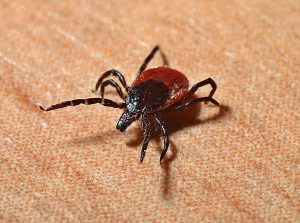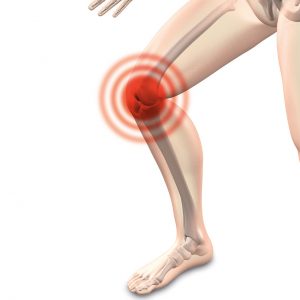Did you know that nearly half a million people are infected with Lyme disease each year? In fact, Lyme disease is one of the fastest growing infectious diseases in the country, according to the CDC. One of the reasons for the skyrocketing case numbers is that research into combating the disease is chronically underfunded. And, while a large number of people are infected with Lyme disease each year, many are unaware that they have the bacterial infection because the symptoms resemble that of a cold or the flu. Because of the widespread nature of Lyme disease – there have been infections reported in all 50 states, particularly in the Northeast – it is important to understand how you get the disease, the symptoms, and how to treat it before it gets worse.
What Is Lyme Disease?

Lyme disease is caused by the bacterium Borrelia burgdorferi, and is passed to humans through the bite of an infected black-legged or deer tick. The tick needs to be on the skin for at least 36 hours in order for a person to become infected with Lyme disease. This, unfortunately, is not a problem; most people are unaware when they are bitten by a tick because the bite does not hurt and is not itchy. These ticks are small, so you might not see it if it is attached to you, meaning it can easily stay hooked onto your skin for several days.
Who Is At Risk?
People who live in wooded areas or have dogs that go into wooded areas are at a higher risk of getting Lyme disease. The tick can latch onto the hair of a dog or cat and then fall off in your home or onto you without you knowing. They often attach to your body in hard-to-see areas such as your groin, armpits or head. Tick bites normally happen during the warmer months when wildlife and people are outside more. But they can be present during the fall and even winter if the temperatures are high enough.
Signs & Symptoms
Early symptoms of Lyme disease start about 3-30 days after an infected tick bites you. It is important to recognize the symptoms early on, because, if left untreated, infection can spread to the joints, heart, and nervous system. Early symptoms include:

- Fever
- Chills
- Headache
- Fatigue
- Muscle and joint aches
- Swollen lymph nodes
- A flat, circular rash that looks like a red circle, oval, or “bull’s-eye”
If the infection is not treated, then the the disease will progress to include symptoms like:
- Swollen knees
- Facial palsy- loss of muscle tone or drooping on one of both sides of the face
- Severe headaches
- Arthritis with severe joint pain and swelling
- Heart palpitations- feeling like your heart is skipping a beat, fluttering, or pounding
- Irregular heart beat
- Nerve pain
- Inflammation of the brain and spinal cord
- Shooting pains or numbness in your feet or hands
- Dizziness or shortness of breath
Diagnosis & Treatment

Early detection and treatment is the best way to avoid Lyme disease. Unfortunately, most people never recall being bitten and less than half ever develop the bullseye rash. But if you experience any of the above symptoms, speak with your doctor right away. Your doctor will want to do blood work to check for antibodies. Because your body does not create antibodies for the disease for several weeks, you will have to take more than one test, as the initial one might not show antibodies.
Treatment works best in the early stages of the disease: the earlier you are treated, the better your chances of recovering quickly. Once the disease is detected, antibiotics will be prescribed for 10-14 days. For those who develop Lyme arthritis, which is a late-stage symptom, oral antibiotics will be prescribed for 28 days. Some people will still experience symptoms after being treated; this is normal and can linger for several months.
Prevention
Lyme disease is not contagious, but there are some things that you can do to help prevent it. When hiking, try to avoid bushy areas and grass. If you live in a wooded area, use an insect repellent with DEET in it, and always check yourself, your children, and your pets daily for ticks.
If you suspect Lyme disease, get tested; if it turns out that you do have it, it can be treated with antibiotics. Having a good health insurance plan will keep the cost of bloodwork and medications required to treat it down. If you are looking for an affordable plan or want to find a better plan than your current one, EZ can help! Our agents are highly trained and work with the top-rated insurance companies in the country. We will compare plans in minutes and provide you with quotes, as well as guidance, at no cost to you. To get free quotes, simply enter your zip code in the bar above, or to speak with a local agent, call 888-350-1890.
